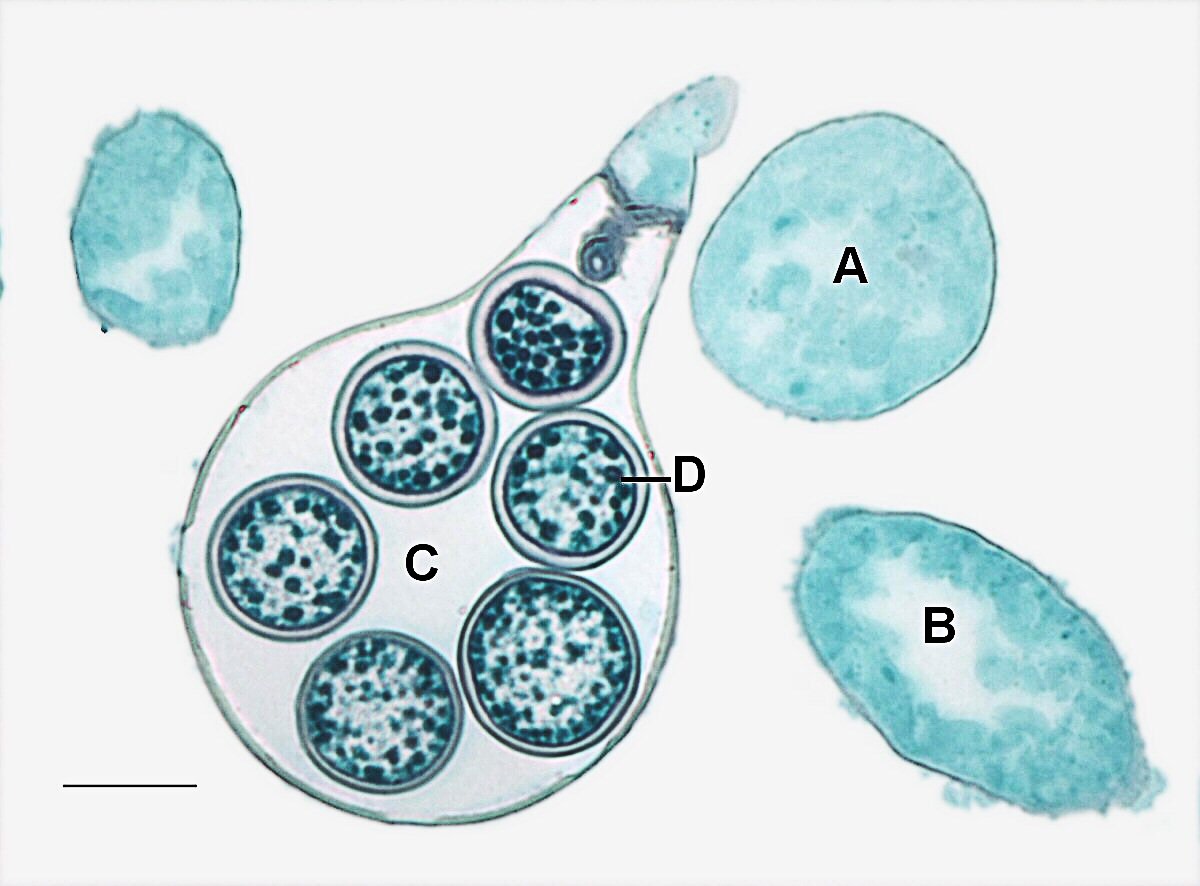
Water molds, also known as oomycetes, are a fascinating group of organisms that play a crucial role in various ecosystems. These unique microorganisms were once classified as fungi due to their similar filamentous structures, but they are now recognized as distinct organisms with their own characteristics and evolutionary history. With over 800 species identified so far, water molds exhibit incredible diversity in their habitats, appearances, and lifestyles. From their impact on agriculture to their role in nutrient cycling in aquatic environments, water molds have significant ecological and economic importance. In this article, we’ll delve into 20 intriguing facts about water molds, shedding light on their biology, ecological interactions, and the critical role they play in the natural world.
Key Takeaways:
- Water molds, not fungi, thrive in water and moist environments, playing vital roles in ecosystems as decomposers and parasites. Their diverse biology and ecological impact make them fascinating subjects of scientific exploration.
- Water molds have economic, medical, and ecological significance, impacting agriculture, biodiversity, and human health. Understanding their biology and responses to environmental changes is crucial for conservation and disease management.
Water Molds: A Fascinating Microbial Group
Water molds, also known as oomycetes, are a group of microorganisms that exhibit both animal and fungal characteristics. Despite their name, they are not fungi but belong to the stramenopiles, a distinct lineage in the eukaryotic domain. Here are 20 intriguing facts about these unique organisms:
Water Molds are Not True Fungi
Contrary to popular belief, water molds are not classified as true fungi. They were historically grouped with fungi due to similarities in appearance and habitat, but molecular studies have revealed their distinct genetic makeup.
They Thrive in Moist Environments
Water molds are commonly found in aquatic environments, particularly in freshwater habitats. They can also thrive in damp terrestrial settings, such as soil and decaying plant matter.
Water Molds Play Ecological Roles
These microorganisms play crucial ecological roles as decomposers, breaking down organic matter and recycling nutrients in various ecosystems. They are also known to act as parasites, causing diseases in plants and animals.
They Produce Motile Spores
Unlike true fungi, water molds produce motile spores known as zoospores. These spores have flagella, enabling them to move through water and colonize new environments.
Water Molds Include Plant Pathogens
Several water mold species are notorious plant pathogens, causing devastating diseases in crops such as potatoes and grapes. The infamous Irish potato famine in the 19th century was attributed to the water mold Phytophthora infestans.
They Are Not Photosynthetic
Unlike algae and plants, water molds do not possess chlorophyll and are incapable of photosynthesis. Instead, they obtain nutrients through osmotrophy, absorbing dissolved organic matter from their surroundings.
Water Molds Have Striking Diversity
The group Oomycota encompasses a wide range of species, exhibiting diverse morphologies and ecological functions. From microscopic waterborne species to larger, terrestrial parasites, water molds display remarkable diversity.
They Are Evolutionary Relicts
Water molds are considered evolutionary relicts, representing ancient lineages within the eukaryotic tree of life. Their distinct genetic and morphological characteristics provide valuable insights into the evolutionary history of eukaryotes.
Water Molds and Historical Significance
Throughout history, water molds have played significant roles in shaping ecosystems and impacting human activities. Their influence on agriculture, forestry, and natural ecosystems has been a subject of scientific and historical interest.
They Are Notable Research Subjects
Due to their unique biology and ecological importance, water molds have been the focus of extensive research in fields such as microbiology, ecology, and evolutionary biology. Their study contributes to a deeper understanding of microbial diversity and ecological processes.
Water Molds and Sustainable Agriculture
Understanding the interactions between water molds and crop plants is crucial for sustainable agriculture. Research efforts aim to develop strategies for managing water mold diseases and minimizing their impact on agricultural productivity.
They Have Economic Implications
Water molds can have significant economic implications due to their impact on agriculture, aquaculture, and natural ecosystems. Efforts to mitigate their effects involve innovative approaches in disease management and environmental conservation.
Water Molds and Aquatic Environments
In aquatic environments, water molds contribute to nutrient cycling and play roles in the decomposition of organic matter. Their interactions with aquatic organisms and their influence on ecosystem dynamics are areas of ongoing scientific investigation.
They Are Notable Plant Disease Agents
Water molds are responsible for various plant diseases, affecting a wide range of agricultural and horticultural crops. Understanding their pathogenic mechanisms is essential for developing effective disease management strategies.
Water Molds and Global Biodiversity
The diversity of water molds contributes to the overall biodiversity of ecosystems, influencing ecological processes and the functioning of natural environments on a global scale. Their ecological roles are integral to the balance of diverse ecosystems.
They Have Medical Relevance
Some water molds have been associated with infections in animals and humans, highlighting their medical relevance. Understanding their role as potential pathogens is essential for addressing health concerns and developing appropriate medical interventions.
Water Molds and Climate Change
The ecological interactions involving water molds are influenced by environmental factors, including climate change. Research on the responses of water molds to shifting environmental conditions contributes to our understanding of ecological dynamics in a changing world.
They Are Subjects of Conservation Efforts
Given their ecological significance, certain species of water molds are subjects of conservation efforts aimed at preserving their natural habitats and the ecosystems they contribute to. Conservation measures play a vital role in safeguarding their biodiversity and ecological functions.
Water Molds and Scientific Exploration
The study of water molds continues to inspire scientific exploration, offering insights into the intricate relationships between microorganisms, plants, animals, and the environment. Ongoing research contributes to our understanding of the complexities of microbial life on Earth.
Conclusion
Water molds, also known as oomycetes, are fascinating organisms that play crucial roles in various ecosystems. From their impact on plant health to their involvement in the decomposition of organic matter, water molds are essential to the balance of natural environments. Understanding the biology and ecological significance of water molds can provide valuable insights into the interconnectedness of life on Earth. As ongoing research sheds light on the complexities of water molds, it becomes increasingly evident that these organisms are not only scientifically intriguing but also vital to the functioning of diverse ecosystems. By recognizing the significance of water molds, we can gain a deeper appreciation for the intricate web of life that sustains our planet.
And here are some FAQs related to the topic "20 Water Molds Facts":
html
FAQs
What are water molds?
Water molds, scientifically known as oomycetes, are a group of microorganisms that thrive in aquatic environments. Despite their name, they are not fungi but belong to a distinct lineage within the kingdom Protista.
How do water molds obtain nutrients?
Water molds are decomposers, obtaining nutrients by breaking down organic matter in their surroundings. They play a crucial role in the recycling of nutrients in aquatic ecosystems.
Are water molds harmful to humans?
While most water molds are not harmful to humans, some species can cause diseases in plants and animals. For example, Phytophthora infestans is responsible for late blight in potatoes and tomatoes.
Can water molds be beneficial?
Yes, water molds can be beneficial in various ways. They contribute to nutrient cycling, and some species have been used in biological control to manage plant diseases.
What are some common misconceptions about water molds?
One common misconception is that water molds are a type of fungus. In reality, they belong to a different biological group and have distinct characteristics and life cycles.
Exploring water molds reveals captivating insights into these unique organisms. From their ecological significance to agricultural implications, water molds play crucial roles in various ecosystems. Delving deeper into additional water mold facts will further showcase their fascinating biology and impact on our world.
Was this page helpful?
Our commitment to delivering trustworthy and engaging content is at the heart of what we do. Each fact on our site is contributed by real users like you, bringing a wealth of diverse insights and information. To ensure the highest standards of accuracy and reliability, our dedicated editors meticulously review each submission. This process guarantees that the facts we share are not only fascinating but also credible. Trust in our commitment to quality and authenticity as you explore and learn with us.


